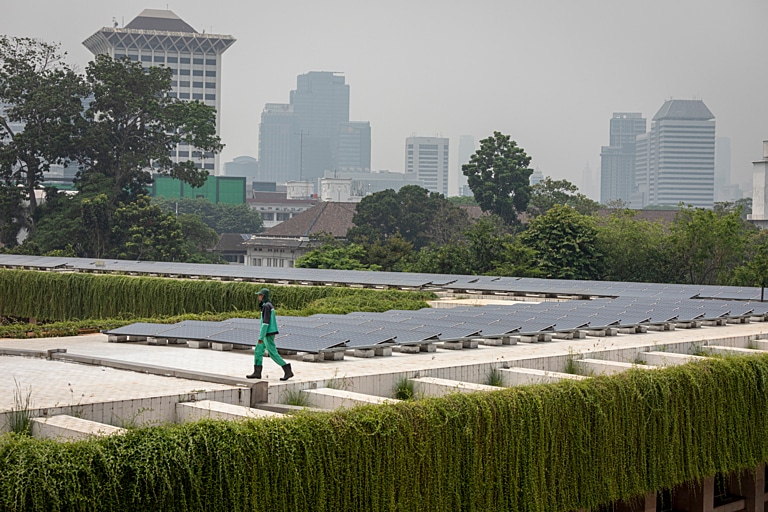Can NY’s TEMP Statute Apply to Solar Construction Workers Internationally?
November 5, 2024
As the global shift toward renewable energy accelerates, solar power plays a pivotal role in the energy transition. However, the rapid expansion of solar projects necessitates a substantial, skilled workforce, often leading to challenges in workforce management, labor rights, and project sustainability. New York’s Temporary Employment Protection (TEMP) Statute, designed to protect temporary workers, may offer a solution. This article explores the potential for adapting this statute internationally for solar project construction workers.
—
New York’s TEMP Statute provides protections for temporary and seasonal workers, groups historically prone to exploitation. The statute ensures fair wages, safe working conditions, and access to benefits, aiming to offer temporary workers the same standards as full-time employees. It also mandates transparency from employers regarding job roles, compensation, and contract length, helping to combat labor abuses like wage theft and unsafe working environments.
The TEMP Statute offers a framework of job security in industries like solar construction, where the workforce fluctuates based on project needs. By mandating clear protections, the statute helps prevent companies from circumventing labor laws, offering workers in precarious positions greater stability.
The Solar Energy Construction Boom
The solar energy sector is experiencing unprecedented global growth. The International Renewable Energy Agency (IRENA) reports that solar capacity has surged from 40 gigawatts in 2010 to over 700 gigawatts by 2022. This growth is driven by efforts to reduce carbon emissions and combat climate change. However, this rapid expansion has outpaced the industry’s ability to manage labor effectively, particularly in countries with weak worker protections.


Solar construction projects demand a wide range of skills, creating high demand for temporary labor during peak periods. In many developing countries, this workforce is often sourced from unregulated labor markets, leading to issues such as low wages, unsafe working conditions, and job insecurity. This is where New York’s TEMP Statute could serve as a potential model.
Benefits of Applying the TEMP Statute Globally
One of the key reasons the TEMP Statute could be a model for solar construction workers worldwide is its emphasis on transparency and fair compensation. In developing countries, solar projects are often outsourced to contractors who may not prioritize workers’ rights. A global adaptation of the TEMP Statute could ensure that workers receive clear contracts detailing their roles, wages, and conditions, reducing the likelihood of exploitation.
Additionally, the TEMP Statute’s provisions on workplace safety could address a critical issue in solar construction, which involves working with heavy equipment, electrical systems, and heights. By enforcing stricter safety standards, a global adaptation could reduce workplace injuries and fatalities.
Furthermore, the statute’s requirement for providing benefits such as health insurance, workers’ compensation benefits, and retirement plans could significantly improve the long-term well-being of temporary solar workers. These protections could lead to a more sustainable and motivated workforce, improving both quality of life and project outcomes.
Challenges of Global Implementation
While the TEMP Statute offers clear benefits, adapting it globally comes with challenges. Labor laws differ vastly between countries, with some nations boasting strong worker protections while others offer minimal regulation. Implementing a system akin to the TEMP Statute across diverse legal environments would require careful adjustments and cooperation between governments, labor organizations, and employers.
In developing nations, enforcement of existing labor laws is already a challenge due to weak governance and corruption. The TEMP Statute might face resistance from industries that rely on cheap, unregulated labor. For the statute to be effective internationally, robust enforcement mechanisms and strong local government support would be essential – factors that may not always be readily available.


Cost is another potential hurdle. Ensuring fair wages, benefits, and safe working conditions could increase the overall cost of solar projects, potentially slowing growth. This is especially true when strong labor laws create fair but also costly construction accident lawsuits. Developing nations, many of which are heavily investing in solar energy as part of their economic development strategies, may struggle to balance worker protections with the need to keep solar energy affordable and accessible.
Adapting the TEMP Statute for Solar Workers
Despite these challenges, adapting the TEMP Statute for solar workers globally is both feasible and beneficial. However, it would require tailoring to each country’s specific labor laws, economic conditions, and workforce dynamics. International organizations like the International Labour Organization (ILO), labor unions, and governments could work together to develop guidelines inspired by the TEMP Statute but adaptable to local contexts.
Additionally, companies involved in solar projects could voluntarily adopt internal policies based on the TEMP Statute, regardless of local labor laws. Industry-wide standards could also be established to ensure that workers on solar projects worldwide are treated fairly, regardless of the country they work in.
New York’s TEMP Statute provides a solid framework for protecting temporary workers and could serve as a valuable guide for addressing labor challenges in the expanding solar construction industry. While adapting the statute globally would face challenges due to legal, economic, and cultural differences, its core principles—fairness, safety, and transparency—are universal. With careful collaboration and tailored approaches, the TEMP Statute could help improve the rights and working conditions of solar project workers around the world.
Featured image: Thomas Kelsey/U.S. Department of Energy Solar Decathlon.
This story is funded by readers like you
Our non-profit newsroom provides climate coverage free of charge and advertising. Your one-off or monthly donations play a crucial role in supporting our operations, expanding our reach, and maintaining our editorial independence.
About EO | Mission Statement | Impact & Reach | Write for us
Search
RECENT PRESS RELEASES
Related Post




